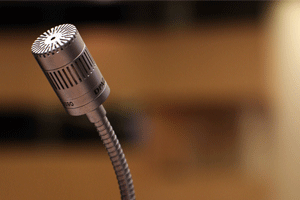In late September, the Sixth Circuit rejected a federal judge’s certification of an artificial class, or “negotiating class” aimed at promoting a global settlement between opioid manufacturers and various cities and counties across the United States. According to U.S. District Judge Daniel Polster of the Northern District of Ohio, the designated “artificial class” would have expedited relief to various municipalities and cities involved in over 1,300 lawsuits filed against pharmaceutical companies for their role in opioid abuse in the United States over the past 20 years. Though the negotiating class was rejected, the issue raises questions about the viability of artificial classes; and it also draws some parallels to how Trust Distribution Procedures (TDPs) have been used in the asbestos personal injury bankruptcies following the waves of judgments and verdicts in favor of the claimants in those mass tort cases over the last several decades.
In this matter, the proposed artificial class would have required 75% of the voting class members in several categories to approve any settlement, with population weighting for each government entity. The proposal set forth by Judge Polster also included an allocation map for any settlement that would have allowed for political subdivisions to compute their share based on various factors such as the number of addiction cases, geographic distribution of opioids, and opioid-related overdose deaths.
The Sixth Circuit rejected the novel certification of the negotiating class on the basis that the proposed class is not authorized by its structure, framework, or language of Rule 23 of the Federal Rules of Civil Procedure. These rules govern the qualifications required to certify class actions. The Circuit Court wrote that the negotiation class would have negotiated issues well beyond the common claims used to certify it and that the plaintiffs had not shown why litigation or settlement classes were not feasible options.
What is an Artificial Class?
An artificial class is a negotiating class created to permit the participating parties to attempt to negotiate a possible class wide settlement of a significant number of cases. The negotiating class concept was conceived to bring some type of global resolution within a Rule 23 (b) (3) class action. Conceptually, a class is identified and potential class members are asked up front if they want to opt out of the class. Those class members that remain, agree to be bound by whatever settlement the parties are able to reach. The negotiating class concept was originally proposed in the asbestos litigation in Amchem Products v. Windsor (1997) almost as a managerial approach to mass litigation. Critics of the negotiating class argue that this concept would convert a court proceeding into an administered compensation scheme, better suited for resolution in the executive branch of government rather than in the courts.
Comparing Artificial Classes to the Asbestos Bankruptcy Personal Injury Trust
Judge Polster’s approach of using artificial classes to find an effective, pragmatic method to reach a resolution in the court and at the negotiating table is similar to the process followed by asbestos personal injury trusts established through Chapter 11 proceedings:
- The asbestos trusts were established to mirror the effects of the mass settlements in the tort litigation, while affording claimants certain rights that they didn’t have in the tort system.
- Similar to the concept in an artificial class, the overhead costs associated with administering the trust are streamlined because the bankruptcy trust process is governed by the terms of the TDPs, which require that all claimants be treated in a manner that is fair and equitable and that every claimant is treated on its individual merits in a fair and reasonable manner.
- Similar to attempting to adopt the concept of an artificial class to settle mass tort litigation, the asbestos bankruptcy trusts combine an economic perspective with the inherent governing justice of the bankruptcy system. This combination of economics and fair justice allows the maximum number of parties, who are victims in any class action or bankruptcy, to obtain relief for their damages in a manner that is both fair, reasonable, and at the same time mitigates the transactional costs of the settlement process. This allows for the maximum recovery of damages to be preserved for the deserving parties deemed eligible for compensation under the terms of a class action settlement, or a TDP.
- Lastly, the concept of an artificial class, similar to the asbestos personal injury bankruptcy trusts, attempts to provide for a measure of financial predictability to all parties for many years in the future.
Clearly, the significant difference between the proposed negotiating class and the asbestos bankruptcy trusts is the opportunity to opt out of the class and the defined amount of the corpus of the Trust. With the proposed artificial class in the opioid litigation, the settlement amounts negotiated by the parties have yet to be determined.
However, the principles behind an artificial class and the asbestos bankruptcy TDPs are similar in that they both attempt to streamline the process of being deemed eligible or qualified for compensation. This process allows the parties to divide a larger financial corpus by eliminating a large quantity of transactional overhead and costs. The overarching principal behind both the artificial class and the asbestos bankruptcy trust is far more consistent with economic logic compared to what exists in the current tort system. All parties are afforded the right to a quicker means of compensation for damages that are determined by agreed upon analytical or medical standards, rather than costly litigation.
The bankruptcy trust system has preserved an immense amount of settlement dollars for deserving injured claimants that would have been lost to the transactional costs associated with the asbestos litigation in the tort system. Artificial classes can potentially have the same impact on future mass tort litigation involving complex litigation.
Click on this link for information on Verus’ Mass Tort Services. To contact us, fill out this form or email us at info@verusllc.com and we will reply immediately.







